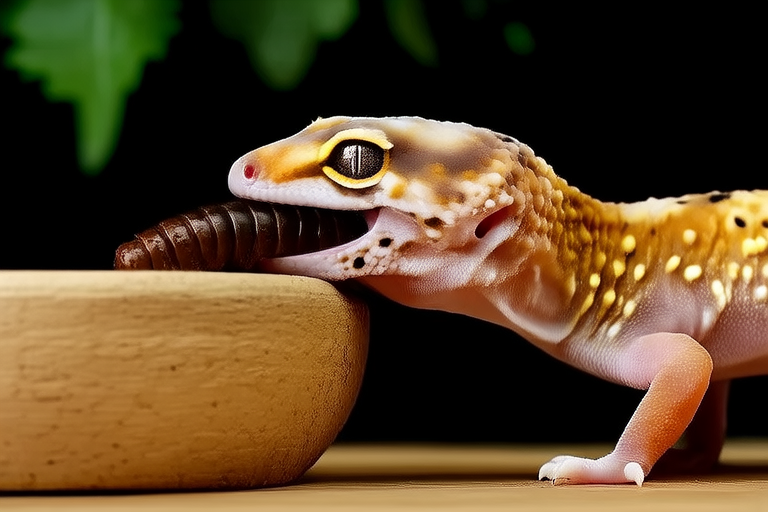Leopard Gecko Diet Secrets: Feeding Tips for Healthy Growth
Welcome to the world of leopard gecko care! These charming reptiles have captured the hearts of many pet enthusiasts with their unique appearance and relatively easy maintenance. One of the most critical aspects of keeping a leopard gecko healthy and happy is understanding its dietary needs. This comprehensive guide will delve into the secrets of feeding your leopard gecko for optimal health and growth, covering everything from essential nutrients to feeding schedules and common pitfalls to avoid.
Essential Nutrients for Leopard Geckos
Like all living creatures, leopard geckos require a balanced diet to thrive. The primary nutrients they need include:
- Protein: For growth, repair, and energy.
- Calcium: Essential for bone health and muscle function.
- Vitamins: Particularly vitamin D3, which aids calcium absorption.
- Water: While geckos get most of their hydration from their food, ensuring a clean water dish is still important.
Understanding these basic nutritional requirements sets the foundation for creating a nutritious diet for your gecko.
Recommended Feeding Schedules for Different Life Stages
The dietary needs of leopard geckos vary depending on their age. Here’s how to adjust their meals as they grow:
Juvenile Leopard Geckos
During the first year of life, leopard geckos experience rapid growth and require frequent feedings. Juveniles should be offered small prey items such as crickets, mealworms, and waxworms daily. The key here is to provide enough food to support growth without overfeeding, which can lead to obesity.
Adult Leopard Geckos
Once they reach adulthood, leopard geckos’ metabolism slows down, and they require fewer meals. Feed adult geckos every other day or every three days, depending on their activity level and body condition. It’s crucial to monitor their weight to ensure they’re neither too thin nor too heavy.
Types of Food: Insects and Vegetables
Leopard geckos are insectivores, meaning their diet primarily consists of insects. However, it’s important to offer a variety of prey to ensure a broad spectrum of nutrients.
Insects
Common feeder insects include:
- Crickets: High in protein and widely available.
- Mealworms: Easy to digest but lower in protein than crickets.
- Rubber Worms: Soft and suitable for smaller geckos.
- Hornworms: Large and nutrient-rich, ideal for adults.
It’s important to gut-load these insects with nutritious foods before offering them to your gecko. Gut-loading involves feeding the insects a diet rich in vitamins and minerals, which they then pass on to your gecko when consumed.
Vegetables
While leopard geckos don’t eat vegetables directly, some owners choose to dust insects with powdered vegetables for additional nutrients. However, this practice is controversial and not universally recommended by reptile experts.
Proper Supplementation: Calcium and Vitamins
To ensure your gecko receives all necessary nutrients, supplementation is crucial. Two key supplements are calcium and vitamins:
Calcium
Calcium is vital for bone health and muscle function. Use a high-quality calcium powder without added phosphorus, and sprinkle it on your gecko’s food several times a week. Be cautious not to over-supplement, as excess calcium can cause health issues.
Vitamins
Vitamin D3 is particularly important for calcium absorption. You can provide D3 through UVB lighting or by adding a multivitamin supplement to their diet once a week. Always follow the manufacturer’s instructions to avoid overdosing.
Feeding Techniques
Effective feeding techniques can make mealtime more enjoyable and less stressful for your gecko:
Use Appropriate Containers
Feed your gecko in a separate container to prevent substrate ingestion. This reduces the risk of impaction, a serious health issue where undigested material blocks the digestive tract.
Monitor Feeding Time
Leave live prey in the enclosure for no longer than 15 minutes to avoid stress or injury to your gecko. If your gecko doesn’t eat within this time, remove the uneaten prey and try again later.
Hand Feeding
Some geckos enjoy being hand-fed. This can be a bonding experience and allows you to closely observe your pet’s appetite and overall health.
Common Feeding Mistakes to Avoid
Despite your best intentions, there are several common mistakes to watch out for:
- Overfeeding: Excessive food can lead to obesity and related health problems.
- Underfeeding: Not providing enough food can stunt growth and weaken your gecko.
- Improper Supplementation: Over-supplementing or using low-quality supplements can harm your gecko.
- Unhealthy Prey: Offering sick or improperly gut-loaded insects can introduce parasites or reduce the nutritional value of the meal.
Avoiding these pitfalls will help ensure your gecko remains healthy and vibrant.
Signs of a Well-Nourished Gecko
A well-fed leopard gecko exhibits several positive signs:
- Active and Alert: A healthy gecko is usually active during feeding times and shows interest in prey.
- Healthy Weight: Your gecko should have a smooth, rounded body without visible ribs.
- Clear Eyes and Skin: Healthy eyes are clear, and the skin is free from dryness or flaking.
- Regular Shedding: Proper nutrition supports regular shedding, which is crucial for maintaining healthy skin.
Monitoring these indicators will give you peace of mind that your gecko is thriving.
Conclusion
Providing a balanced and nutritious diet is one of the most important aspects of caring for your leopard gecko. By understanding their nutritional needs, adjusting feeding schedules according to their life stage, and avoiding common mistakes, you can ensure your gecko enjoys a long, healthy, and happy life. Remember, each gecko is unique, so it may take some trial and error to find the perfect diet for your pet. Stay informed, stay observant, and enjoy the rewarding experience of caring for these delightful reptiles.
